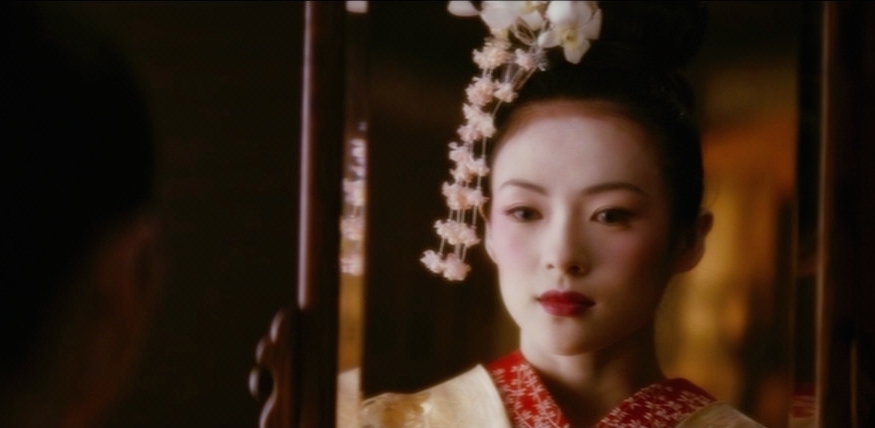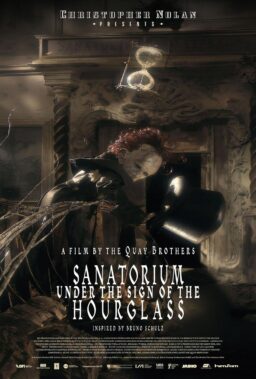We’ve been hearing claims that Hollywood can’t make a big movie with an ethnic Asian female lead. However, Asian actresses are not #WhitewashedOUT if the woman is playing a prostitute, as in the 2005 movie “Memoirs of a Geisha,” directed by Rob Marshall, based on Arthur Golden’s 1997 best-selling novel of the same name. When I hear people comment that “Memoirs of a Geisha” doesn’t support stereotypes, or praise it for its authenticity, I’m filled with a blazing anger and a suffocating sadness. Some things never seem to change.
If you read the reviews on Amazon.com, out of 3,286 reviews the novel has a 68% rating of five stars. The movie has a 61% five-star rating (out of 724). The top customer review of the movie mentions “the reserved nature of Asian women,” as if all the women of the earth’s most populous continent—home to many different cultures—shared essentially the same values.
In his movie review, Roger Ebert wrote, “I suspect that the more you know about Japan and movies, the less you will enjoy ‘Memoirs of a Geisha.’ Much of what I know about Japan I learned from Japanese movies, and on that basis I know this is not a movie about actual geishas, but depends on the romanticism of female subjection. The heroines here look so very beautiful and their world is so visually enchanting as they lived trapped in sexual slavery.” Yet he also acknowledged that he could list Japanese movies that better illustrate a different view of geisha, “but the last thing the audience for ‘Memoirs of a Geisha’ wants to see is a more truthful film with less gorgeous women and shabbier production values.” This movie’s audience wanted to see “beauty, sex, tradition and exoticism all choreographed into a dance of strategy and desire.”
While he acknowledged that a geisha “is not technically a prostitute,” Roger asserted that they were prostitutes and clarified by stating, “certainly the traditions of the geisha house are culturally fascinating,” but continued by writing, “if the movie had been set in the West, it would be perceived as about children sold into prostitution.” Ultimately, he felt somewhat uneasy about the movie, in the same manner he had for the 1978 film “Pretty Baby” where Brooke Shields played a 12-year-old girl having her virginity auctioned away in New Orleans. But Roger concluded by writing, “The difference is that ‘Pretty Baby’ doesn’t evoke nostalgia, or regret the passing of the world it depicts.”
Ebert didn’t object to the Chinese women playing the leads, but he doesn’t speak Japanese. In her 2006 essay, “Orientalism and the Binary of Fact and Fiction in ‘Memoirs of a Geisha,” Kimiko Akita notes that “Westerners would not recognize any differences between the movements or speech of Chinese and Japanese actresses. Asian-accented English might seem fetchingly exotic to Western ears.” Akita graduated from Nanzan Junior College in Japan and eventually earned her PhD in Communications from Ohio University. She currently teaches at Aichi Prefectural University in the Foreign Studies department in Japan.
For Akita, who applies Edward Said’s concept of Orientalism, the success of both the book and the movie “tells us something about the American cultural tastes for the Orient,” and signifies “Orientals” as “a sexualized and exoticized object to be commodified by the West.” As per Said, Akita finds the “Orient” a Western construction and the popularity of the book and the movie illustrate an appetite for “postmodern American Orientalism.”
Chillingly, Akita asserts that the “Memoirs of a Geisha” book “has been adopted for use in literature and other humanities classes at some U.S. colleges and universities.” For Akita, “Memoirs of a Geisha” imposes “barriers to better intercultural understanding and communication.” In the movie, Akita finds that the use of an American Occupation soldier evokes nostalgia for U.S. dominance of Japan after World War II.” Golden establishes that “the colonizer is privileged to sexualize and consume the bodies of the colonized, who welcome their advances.” In the book, Sayuri explains that “All the stories about invading Americans soldiers raping and killing us had turned out to be wrong; and in fact, we gradually came to realize that the Americans on the whole were remarkably kind.”
Akita doesn’t mention, however, that rape did occur during the American Occupation of Japan, but others such as Terese Svoboda (“U.S. Courts-Martial in Occupation Japan: Rape, Race and Censorship“) note that rape, robbery and even murder were problems under the Occupation Army. The information was suppressed in Japanese and non-Japanese papers once the Occupation became more established. Svoboda also notes some of the incidents included gang rapes and “institutionalized rape.” That complicated the case of the comfort women of all races, in addition to the finding that rape was not a war crime in both the tribunals at both Nuremberg and Tokyo. Svoboda found that race was indeed an issue in the prosecution of rape. In Europe, black soldiers were more likely to face execution than white soldiers. In Japan, those records are murkier according to Svoboda. Svoboda writes, “Although white and black soldiers were convicted of rape in both theaters during the war, only black servicemen were executed for this crime.” Erasing this evidence of rape clouds other issues, including the so-called comfort women.
Race was an issue during World War II and it remains an issue now in real life and at the movies. In cinematic history, “Memoirs of a Geisha” was preceded by the 1997 “Amistad,” the 1992 “Malcolm X,” the 1985 “The Color Purple,” the 1996 “Waiting to Exhale,” the 2008 “The Great Debaters,” the 1993 “The Joy Luck Club,” and Ang Lee’s 2000 “Crouching Tiger, Hidden Dragon.” Yet there was also the 1999 “Snow Falling on Cedars,” and “Memoirs of a Geisha” was followed by the 2008 Sony movie, “21.” While black history was being explored and celebrated and novels by black writers were making it to the big screen, the choice of “Memoirs of a Geisha,” even for a Japanese company like Sony, was a step backward in race relations and international understanding.
Amy Tan’s book “The Joy Luck Club” indicated that novels by and about East Asians as American immigrants could be successful. “Crouching Tiger, Hidden Dragon” demonstrated that foreign language films with Asian casts could be blockbusters. On the other hand, “Snow Falling on the Cedars” harked back to the World War II mentality that American-born Asians were more Asian than American by casting a Japanese actress who spoke English with a Japanese accent even though she was playing an American-born woman of Japanese ethnicity. “Memoirs of a Geisha” presented Chinese and Japanese women as essentially the same in physical appearance and foreign accents. According to Akita, the Japanese culture played little significance in the movie.
As both a translated book and a movie, “Memoirs of a Geisha” was not successful in Japan, although it seems to have increased interest in Japan in the U.S and other areas. In that respect, Marshall’s film was not unlike the mini series “Shogun”—a hit in the U.S. and a flop in Japan.












